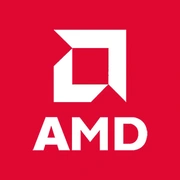AMD Radeon PRO V710

The AMD Radeon PRO V710 is a powerful GPU designed for professional desktop use. With a base clock of 1900 MHz and a boost clock of 2000 MHz, this GPU delivers impressive performance, making it well-suited for high-intensity tasks such as rendering and 3D modeling.
One of the standout features of the Radeon PRO V710 is its expansive 28GB of GDDR6 memory, allowing for smooth handling of large datasets and complex simulations. The memory clock speed of 2250 MHz further enhances its ability to process and manipulate data quickly and efficiently. Additionally, the GPU boasts 3456 shading units and 2 MB of L2 cache, contributing to its overall speed and responsiveness.
In terms of power consumption, the Radeon PRO V710 has a TDP of 158W, which is relatively efficient considering its high-performance capabilities. This makes it a suitable option for users conscious of energy usage and heat management.
With a theoretical performance of 27.097 TFLOPS, the Radeon PRO V710 is a workhorse that can tackle demanding workloads with ease. Whether you're working on complex visualizations, simulations, or content creation, this GPU is more than capable of handling the task.
Overall, the AMD Radeon PRO V710 is a top-tier GPU that offers exceptional performance, ample memory, and efficient power consumption, making it an excellent choice for professionals in need of a high-powered desktop GPU.
Basic
Label Name
AMD
Platform
Desktop
Launch Date
October 2024
Model Name
Radeon PRO V710
Generation
Radeon Pro Navi(Navi III Series)
Base Clock
1900 MHz
Boost Clock
2000 MHz
Bus Interface
PCIe 4.0 x16
Transistors
28.1 billion
RT Cores
54
Compute Units
54
TMUs
?
Texture Mapping Units (TMUs) serve as components of the GPU, which are capable of rotating, scaling, and distorting binary images, and then placing them as textures onto any plane of a given 3D model. This process is called texture mapping.
216
Foundry
TSMC
Process Size
5 nm
Architecture
RDNA 3.0
Memory Specifications
Memory Size
28GB
Memory Type
GDDR6
Memory Bus
?
The memory bus width refers to the number of bits of data that the video memory can transfer within a single clock cycle. The larger the bus width, the greater the amount of data that can be transmitted instantaneously, making it one of the crucial parameters of video memory. The memory bandwidth is calculated as: Memory Bandwidth = Memory Frequency x Memory Bus Width / 8. Therefore, when the memory frequencies are similar, the memory bus width will determine the size of the memory bandwidth.
224bit
Memory Clock
2250 MHz
Bandwidth
?
Memory bandwidth refers to the data transfer rate between the graphics chip and the video memory. It is measured in bytes per second, and the formula to calculate it is: memory bandwidth = working frequency × memory bus width / 8 bits.
504.0GB/s
Theoretical Performance
Pixel Rate
?
Pixel fill rate refers to the number of pixels a graphics processing unit (GPU) can render per second, measured in MPixels/s (million pixels per second) or GPixels/s (billion pixels per second). It is the most commonly used metric to evaluate the pixel processing performance of a graphics card.
192.0 GPixel/s
Texture Rate
?
Texture fill rate refers to the number of texture map elements (texels) that a GPU can map to pixels in a single second.
432.0 GTexel/s
FP16 (half)
?
An important metric for measuring GPU performance is floating-point computing capability. Half-precision floating-point numbers (16-bit) are used for applications like machine learning, where lower precision is acceptable. Single-precision floating-point numbers (32-bit) are used for common multimedia and graphics processing tasks, while double-precision floating-point numbers (64-bit) are required for scientific computing that demands a wide numeric range and high accuracy.
55.30 TFLOPS
FP64 (double)
?
An important metric for measuring GPU performance is floating-point computing capability. Double-precision floating-point numbers (64-bit) are required for scientific computing that demands a wide numeric range and high accuracy, while single-precision floating-point numbers (32-bit) are used for common multimedia and graphics processing tasks. Half-precision floating-point numbers (16-bit) are used for applications like machine learning, where lower precision is acceptable.
864.0 GFLOPS
FP32 (float)
?
An important metric for measuring GPU performance is floating-point computing capability. Single-precision floating-point numbers (32-bit) are used for common multimedia and graphics processing tasks, while double-precision floating-point numbers (64-bit) are required for scientific computing that demands a wide numeric range and high accuracy. Half-precision floating-point numbers (16-bit) are used for applications like machine learning, where lower precision is acceptable.
27.097
TFLOPS
Miscellaneous
Shading Units
?
The most fundamental processing unit is the Streaming Processor (SP), where specific instructions and tasks are executed. GPUs perform parallel computing, which means multiple SPs work simultaneously to process tasks.
3456
L1 Cache
128 KB per Array
L2 Cache
2 MB
TDP
158W
Vulkan Version
?
Vulkan is a cross-platform graphics and compute API by Khronos Group, offering high performance and low CPU overhead. It lets developers control the GPU directly, reduces rendering overhead, and supports multi-threading and multi-core processors.
1.3
OpenCL Version
2.2
OpenGL
4.6
DirectX
12 Ultimate (12_2)
Power Connectors
1x 8-pin
Shader Model
6.8
ROPs
?
The Raster Operations Pipeline (ROPs) is primarily responsible for handling lighting and reflection calculations in games, as well as managing effects like anti-aliasing (AA), high resolution, smoke, and fire. The more demanding the anti-aliasing and lighting effects in a game, the higher the performance requirements for the ROPs; otherwise, it may result in a sharp drop in frame rate.
96
Suggested PSU
450 W
Benchmarks
FP32 (float)
Score
27.097
TFLOPS
Compared to Other GPU
FP32 (float)
/ TFLOPS
Share in social media
Or Link To Us
<a href="https://cputronic.com/en/gpu/amd-radeon-pro-v710" target="_blank">AMD Radeon PRO V710</a>